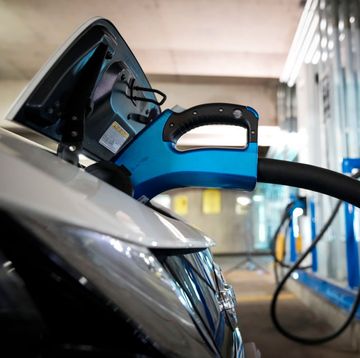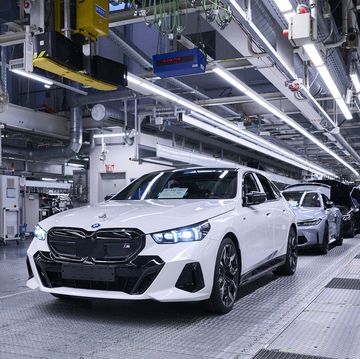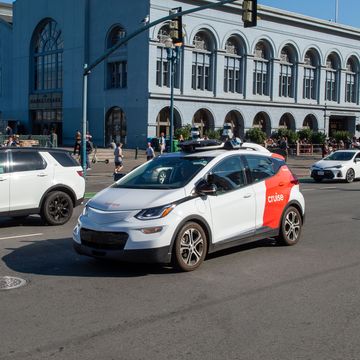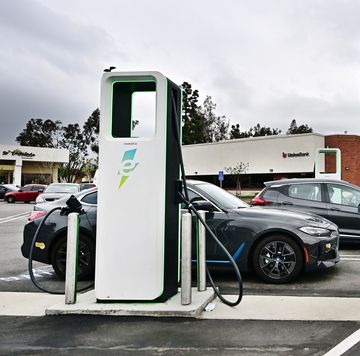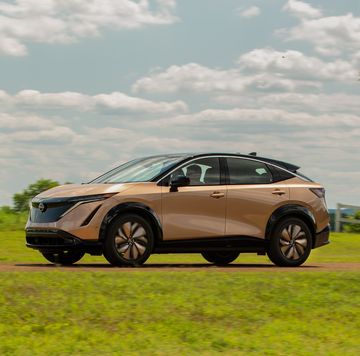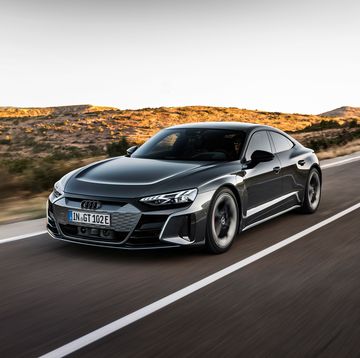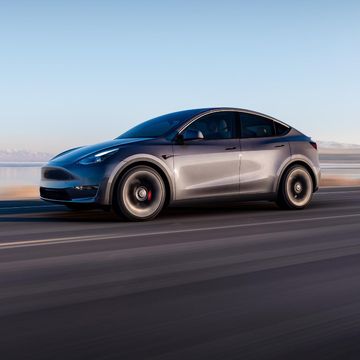- German industrial giant Rheinmetall will test curb stone chargers in Cologne, offering an alternative to curbside charging posts.
- The 22-kW charger is designed to use existing grid connections, offering slower charging speeds but at a fraction of DC station costs.
- Several charging developers are currently testing different models of curbside chargers, aimed at apartment dwellers, as cities and states prepare to phase out sales of internal-combustion vehicles.
Ubiquitous curbside charging remains something of a utopian dream at the moment for many US cities, with plenty of red tape and construction costs holding back the development of city charging infrastructure. And then there's the ever popular refrain of "Who's going to pay for it?"
But the states that have adopted California's 2035 ZEV mandate, or even earlier targets, will eventually have to address easy EV charging for urbanites with overnight street parking.
There's a new alternative concept to post-style curbside chargers that might address a number of issues that have kept this type of charger from becoming commonplace. Developed by Germany's Rheinmetall, the curb stone charger is exactly what it sounds like—a charger incorporated into the curb stone itself—essentially becoming a charging post that is positioned horizontally.
The company, along with the city of Cologne, Germany, as well as TankE GmbH, will undertake a pilot project to install curb stone chargers in the city to test their acceptance by EV owners, as well as validate their design. The system has already been tested internally by Rheinmetall for safety.
"Integrating the charger electronics into a curb stone turns it into de facto 'charging pole,' though without the associated limitations," the company explains.
The curb stone chargers are designed to draw power from local grid connections, offering 22 kW speeds, so these won't replace DC fast-chargers anytime soon. But they will be powerful enough to provide range to EVs parked overnight or for several hours.
The chargers themselves are positioned flush with the pavement, allowing EV owners to pull up a section in order to access the plug, and then run a cord to their EV's charging port. One limitation that remains, of course, is that EV owners will need to bring their own cables. But that's true for many post-type chargers as well.
"The German government's ambitious target of 15 million electric vehicles by 2030 can only be attained if charging capacity keeps pace with the country's expanding fleet of e-vehicles, since in future many more people who lack access to private parking spaces and charging stations will have to make the switch to e-mobility as well," the company notes.
Rheinmetall estimates that Germany will need around a million public charging stations by the year 2030. But this estimate itself is viewed as a conservative one, as chargers will ideally need to exist in workplace parking lots and at home for apartment dwellers.
Is this type of charger a good idea, or would EV owners prefer faster stations with their own provided cables? Let us know what you think.

Jay Ramey grew up around very strange European cars, and instead of seeking out something reliable and comfortable for his own personal use he has been drawn to the more adventurous side of the dependability spectrum. Despite being followed around by French cars for the past decade, he has somehow been able to avoid Citroën ownership, judging them too commonplace, and is currently looking at cars from the former Czechoslovakia. Jay has been with Autoweek since 2013.

